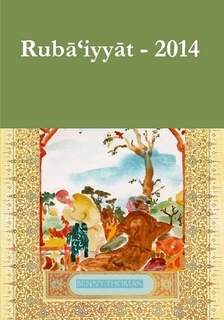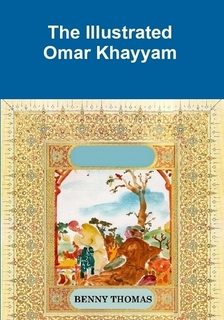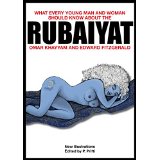 A new version of Khayyám’s quatrains was recently published by Benny Thomas, architect by profession and poet by temperament, in his own words. The work comprises 255 verses, some in rhymes, others only partially rhyming while the rest are blank verses.
A new version of Khayyám’s quatrains was recently published by Benny Thomas, architect by profession and poet by temperament, in his own words. The work comprises 255 verses, some in rhymes, others only partially rhyming while the rest are blank verses.
Thomas’ argument for yet another version or interpretation is that the voice of Omar Khayyam still speaks to us, “because we see in the quatrains our own unexpressed thoughts elegantly phrased”. In his foreword, Aminrazavi describes the quatrains by Benny Thomas as the “silence that makes music of the soul coherent to each”.
Khayyám’s quatrains must not be viewed “as a case for his adherence to Sufi tradition”, nor does the translator’s (that is FitzGerald), skepticism in the quatrains follow from not being true to the original, as Thomas explains. As a mystic he reads something else in them, or to paraphrase his own words: both Khayyám and FitzGerald are representative geniuses of our cultural heritage, who gave expression to the voice of their souls, the voice of their Inner Worlds.
The book was issued (as prints on demand) in three states: an illustrated paperback edition, a cheaper version without illustrations and an illustrated e-book. The illustrations were done by the translator. Available at Lulu.com.
Unfortunately, the work is not without errors. In the foreword (p. 7/9) we read: “Eight-hundred years after his death, the spirit and message of Omar Khayyám has once again celebrated in the exquisite quatrains …”. Many sentences are incomplete and for me, not being a mystic, some of the verses are almost impenetrable, for instance quatrain #158:
The color that we swore upon with life
Is false hue drawn from lie engenders strife:
In death and all enfolding gloom our souls
Must reorient with what is true or life.
More about Benny Tomas’ translation can be found on his weblog: “The Rubaiyat“, which also shows a number of the artist’s illustrations.
 One of the early illustrators of the Rubáiyát of Omar Khayyám was Gilbert James (1865-1941). His work can be found in numerous editions and reprints of The Rubáiyat, and a number of his illustrations have been issued as post cards as well. Although this indicates that his work was rather popular in his days, very little is known about the artist himself.
One of the early illustrators of the Rubáiyát of Omar Khayyám was Gilbert James (1865-1941). His work can be found in numerous editions and reprints of The Rubáiyat, and a number of his illustrations have been issued as post cards as well. Although this indicates that his work was rather popular in his days, very little is known about the artist himself. That Omar Khayyám definitely has gone digital may be a surprise to no one. The digital versions of editions and critial works that are out of copyrights abound since years. More recently we see a steady flow of new rubáiyáts in various formats of ebooks: DjVu, ePub, eReader, iBook, pdf and many others.
That Omar Khayyám definitely has gone digital may be a surprise to no one. The digital versions of editions and critial works that are out of copyrights abound since years. More recently we see a steady flow of new rubáiyáts in various formats of ebooks: DjVu, ePub, eReader, iBook, pdf and many others.


